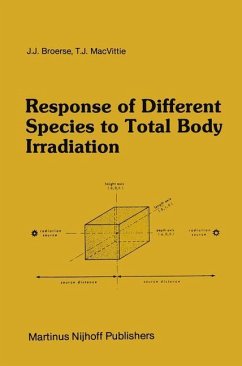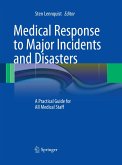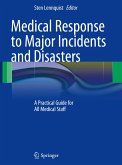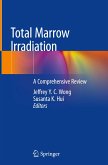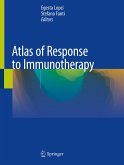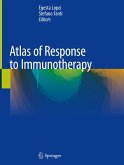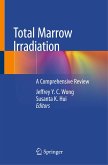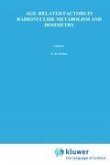J.J. Broerse, Radiobiological Institute TNO, Rijswijk, The Netherlands, and T .J. MacVittie, Armed Forces Radiobiology Research Institute, Bethesda, MD, USA. During the past decade, relatively few new studies have been initiated on the response of different species to high-dose, total-body irradia tion. For information on the LDSO/30d (the dose which produces 50 percent lethality within 30 days), one is generally referred to the older literature (e. g., Bond, Fliedner and Archambeau, 1965). Compari son of experimental data reveals considerable variations in LDSD values even after total-body irradiation with conventional X rays, ranging from 4 to 6 Gy in the monkey, 7.1 to 9 Gy in the rat and from 6.4 to 9 Gy in the mouse (see also Hall, 1978). Part of the discrepancy in the LDso values can possibly be attributed to inadequacies in the dosimetry procedures and exposure arrangements employed. As far as clinical experience is concerned, there is now an appreciable amount of information available about the effect of total body irradiation as a conditioning treatment for bone marrow transplan tation in patients suffering from leukaemia or aplastic anaemia. The results from different centres, including the incidence of complications such as radiation pneumonitis, are considerably different. This can part I y be connected with the application of different radiation sched ules: large single dose versus fractionated or protracted irradiation.
Hinweis: Dieser Artikel kann nur an eine deutsche Lieferadresse ausgeliefert werden.
Hinweis: Dieser Artikel kann nur an eine deutsche Lieferadresse ausgeliefert werden.
`...a ``must'' in the library of scientists, biologists and physicists who are involved in TBI applied to cure malignant diseases.'
Blut, 51:4 (1985)
Blut, 51:4 (1985)
`...a ``must'' in the library of scientists, biologists and physicists who are involved in TBI applied to cure malignant diseases.'
Blut, 51:4 (1985)
Blut, 51:4 (1985)

